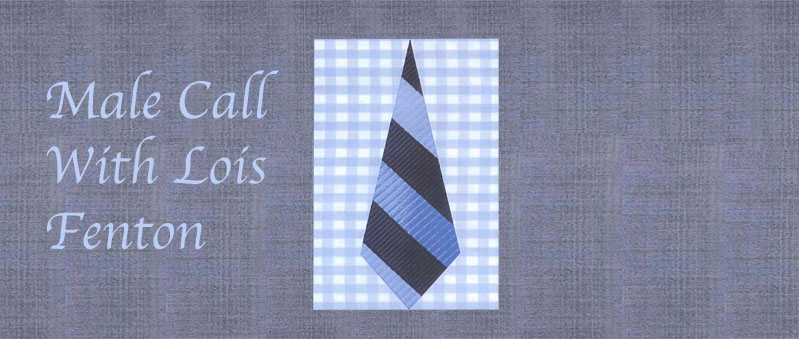 |
| Folded white linen handkerchief |
A simple way to ease into this style is to tuck a white linen handkerchief into your breast pocket – always safe and never wrong, though perhaps a bit formal. For more dash and sophistication, choose a colorful silk pocket square.
Remember, when wearing a tie and colored silk pocket square, the two patterns should never match exactly. A matched tie-and-handkerchief-set is more than a tad tacky -- like dressing out of a kit. Instead, aim for the tie and pocket square to complement each other and your shirt or suit by repeating at least one of the colors and by not repeating the exact pattern. For example: Consider a blue suit, white shirt, and red-and-blue small-patterned tie. A good choice would be a navy silk square with a large red paisley pattern. Or for another example: With a tan suit, a light blue shirt, and a blue and brown striped tie, try a brown and blue polka dot pocket square – these are pulled-together mixes that don't seem overly contrived or too worked on.
Wearing a pocket handkerchief is a different and somewhat natty way to dress, but it is definitely not right for everyone. Some men, who have a low “feeling-silly” threshold, would be self-conscious and feel too much like a dandy with a handkerchief in their breast pocket. Men with these concerns should never think of wearing one. (And their spouses should not try to buy them one as a gift; it won't work.)
On the other hand, many men do wear a pocket square with self-assurance and comfort. As an example, a man attending one of my lectures told me that once, when he forgot his silk pocket square, he returned home for it. Another man, one of the classiest dressers I know, never wears a pocket handkerchief for business or casual weekends. He likes to use his as a transition step between wearing a suit-and-tie and dressing in "black tie." He says it's the sort of look he might wear to a former girl friend's wedding. Obviously, these men are very different types of dressers.
Pocket squares do not need to be silk. Cotton handkerchiefs, in either white or a soft color, have a more casual air and are perfect with a tweed sports jacket. It goes without saying – but I will say it anyway – a pocket square is part of the outfit and not meant to be used as a handkerchief.
A pocket-handkerchief is usually worn folded with the points up or else with the center softly puffed and the points down. It is supposed to be a subtle touch, not exaggerated. You can Google “How to fold a pocket square” for helpful tips.
A note of caution: The points should not be too perfectly lined-up like soldiers or a picket fence. A young man at one of my lectures proudly showed me how he had carefully folded his handkerchief over a small cardboard template to make the points come out precisely even. Wrong! A certain air of nonchalance is what you are aiming for. It should be visible just enough to expose an inch or two of fabric above the pocket. A pocket square that flops out too much – like a flower – does not have a dashing man-about-town effect. It looks more like a dandy.




